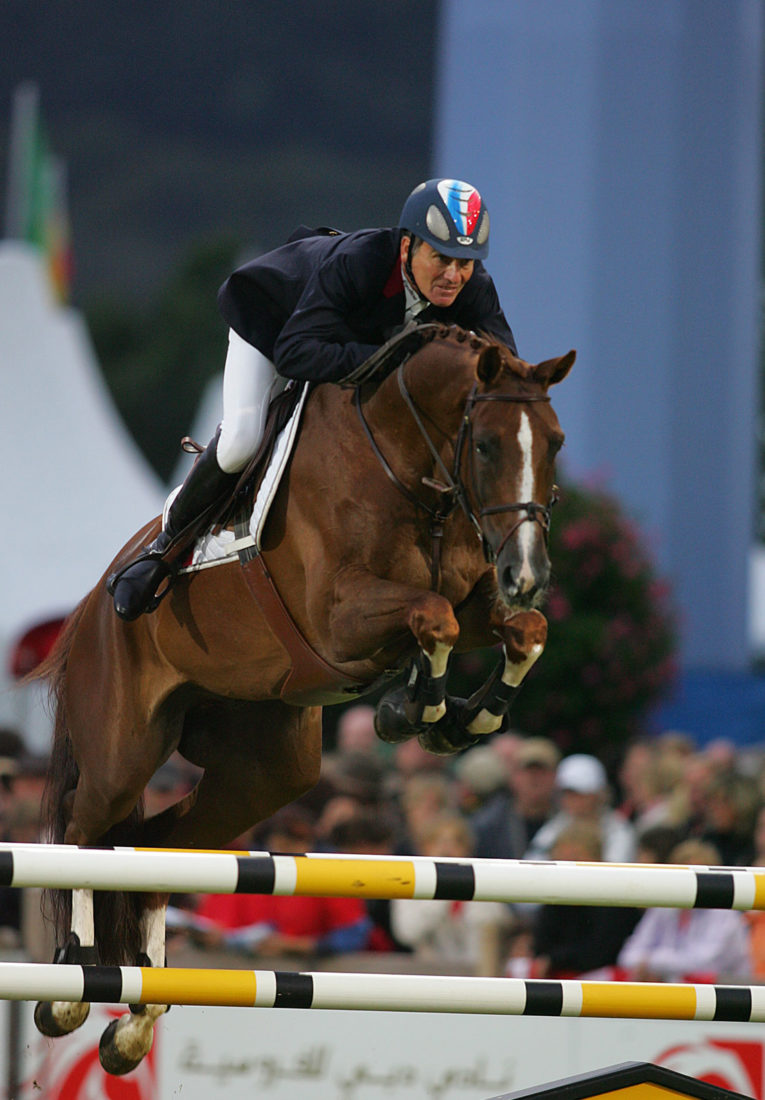Think of the Alltech FEI World Equestrian Games as the Olympics, only with hooves. Since 1990, the Games have combined the world championships of eight disciplines, some familiar, some obscure. This will mark the first time the Games (which take place at Lexington’s Kentucky Horse Park from September 25 through October 10) have ventured outside Europe, with the influx of foreign competitors necessitating what organizers describe as the largest transport of horses across the Atlantic since World War II. NBC Sports is betting that plenty of nonriders will also get caught up in the buzz: The network is devoting more than six hours of airtime to the Games, the most extensive TV coverage of equestrian sport ever in the United States.
Here’s a crib sheet with a few of the sports and stars to watch for this fall.
The Sports
DRESSAGE: One of three equestrian sports included in the Olympics (along with jumping and eventing). Horse and rider execute a predetermined sequence of intricate balletic moves called figures before a hushed arena crowd. The elegantly dressed riders aim to coach the horses all but imperceptibly, and in fact incur penalties if they use their voices. Interestingly, a bit of white foam around the horse’s mouth is “a good sign,” according to the United States Dressage Federation; it indicates “he is attentively chewing on his bit and comfortable in his work.” A rider foaming at the mouth, however, may be cause for alarm.
DRIVING: Instead of riding on the horse, a driver sits on a carriage pulled by one, two, or, as in these Games, a team of four. Four-in-hand driving encompasses three stages that put horses’ versatility to the test: dressage, a cross-country “marathon,” and weaving a tight course through traffic cones, with a ball precariously balanced on each cone. Drivers and their teams who knock off any balls or take too much time get dinged with penalty points.
ENDURANCE: A hundred-mile race over natural terrain that tests the mettle of horse and human alike. Think of it as the anti–Kentucky Derby—the most exciting twelve hours in sports. The first horse to cross the finish line wins, but each horse must pass a veterinarian’s inspection at at least five stops to ensure the animal’s welfare.
EVENTING: Often described as an equestrian triathlon, eventing is a demanding pursuit that combines dressage, cross-country (which includes obstacles such as walls, ditches, and banks), and show jumping—all with the same horse and rider but usually on different days. It can be dangerous, and human and equine competitors alike have at times suffered severe, even fatal injuries. Not surprisingly, eventing has been called “the ultimate test of horse and rider.”
JUMPING: With origins in eighteenth-century fox hunting, show jumping is the best-known equestrian competition and one of the most adrenalizing for spectators. Men and women compete as equals, and their steeds navigate a course of ten to thirteen jumps, with fences looming as high as five feet; four penalty points accrue anytime a horse knocks down part of an obstacle or takes a good look at one and says the hell with it (otherwise known as a refusal).
PARA DRESSAGE: Included in the Games for the first time this year, para dressage allows physically disabled athletes to compete, classified from grade I to grade IV based on their circumstances. Blind athletes, amputees, multiple sclerosis patients, and those with cerebral palsy are among the competitors. They follow conventional dressage rules, with some special equipment allowed, such as prostheses, radio-frequency devices (for the hearing-impaired), and even a limited amount of Velcro on the saddle.
REINING: The fastest-growing of the eight WEG disciplines, even in unlikely far-flung locales like Finland and Slovakia. True to the sport’s Western ranch roots, competitors in cowboy hats and boots take horses through a series of maneuvers inside an arena, including spins, rollbacks (quick reversals of direction), large and small circles, and hind-leg power slides — moves that might come in handy while herding cattle. Judges add and subtract points for smoothness, finesse, quickness, and other traits. Unlike in dressage, spectators’ whoops and whistles are encouraged.
VAULTING: A crowd-pleaser and a good bet to be equestrian competition’s Next Big Thing, vaulting combines ballet and gymnastics on the back of a cantering horse. Vaulters perform stylish mounts and dismounts, do headstands and handstands and pirouettes, and even carry others on their shoulders, cheerleader-style, all set to music.
Whom to Watch
Meredith Michaels-Beerbaum, Germany. Trailblazing Los Angeles native and Princeton dropout who became a German citizen after marrying a German rider. In 2004 she became the first female show jumper ranked number one in the world; also the first woman ever to win three World Cup Finals. She’s won most of her medals on her seventeen-year-old gelding, Shutterfly, an equine Michael Jordan who is wildly popular in Europe.
Chester Weber, United States. Based in Ocala, Florida, thirty-five-year-old Weber has won the U.S. national four-in-hand driving title for an unprecedented eight straight years. Two years ago he became the first American to win an individual medal at the World Driving Championships. A nice storybook touch: Jamaica, a gelding who has competed on all of Weber’s champion teams, started his driving career after getting rescued from a Belgian slaughterhouse.
Edward Gal, Netherlands. Gal (a Dutch rider) and Moorlands Totilas (a ten-year-old black stallion) are the hottest ticket in dressage — and honestly, how often have you heard that phrase? In May, some 6,000 fans jammed into an arena in Munich, Germany, designed to hold just 1,500 to see them strut their stuff. After banking about $55,000 in prize money for that freestyle event, Gal said, “Six minutes of riding to get so much money is amazing.”
Oliver Townend, Great Britain. Last April, as the ash cloud from an Icelandic volcano grounded flights across Europe, this twenty-seven-year-old Brit spent $3,000 on a taxi ride from Paris to Madrid so he could catch a flight to the United States and get to Lexington for an eventing competition. With a victory in the Rolex Kentucky, Townend would have bagged a third-consecutive four-star event win — a feat known as a Grand Slam, which only one athlete has ever accomplished — and $350,000 in prize money. Instead, he took a bad fall, got knocked unconscious, and cracked his collarbone. At the World Equestrian Games, he’ll return for a shot at redemption and a gold medal.








